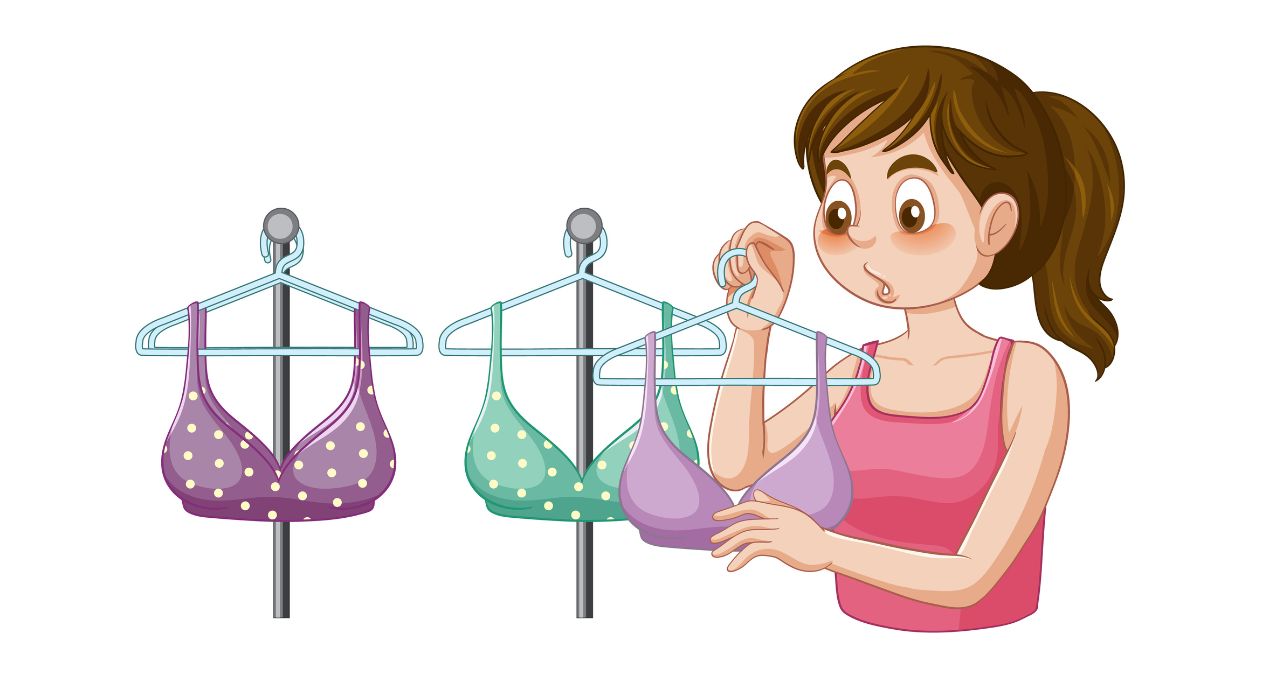Have you ever walked into a lingerie store only to realize that nothing seems to fit your smaller frame? You’re not alone. Many women and girls spend hours searching for the smallest bra size that actually feels comfortable. From teens buying their very first bra to adults with a petite chest and even older women looking for supportive yet soft designs, finding the right fit can feel overwhelming.
This guide breaks down the smallest bra sizes available worldwide, explains how sizing works, and offers practical tips for women and girls of all ages who wear tiny bra sizes.
Why Bra Sizes Can Be Confusing
Bra sizes are a combination of band size (the number, e.g., 28, 30, 32) and cup size (the letter, e.g., A, B, C). The band measures your ribcage, while the cup represents breast volume.
👉 This means a 32A is not the same as a 28A—the smaller band makes the cup volume different.
To add to the confusion, sizing systems vary across the U.S., U.K., Europe, and Asia. That’s why knowing the smallest cup size in your region helps you shop smarter.
Smallest Bra Sizes by Age Group
1. Preteens & Teens (Training Stage)
- Most girls start with training bras (XS, S, M) without cup sizing.
- As breasts develop, the smallest available bras are usually 28AA, 30AA, or 32A.
- Some specialty lingerie brands even carry AAA cup sizes for very petite frames.
✨ Tip: Choose wire-free bras with soft fabric for comfort while your body is still changing.
2. Young Women & Adults
- In U.S. sizing, the smallest band is often 28 (some specialty brands go down to 26).
- The smallest cup size is AAA or AA.
- Common petite-friendly options include 26AAA, 28AA, and 30AA.
- In Asia, bras often start at 65A (30A U.S. equivalent), making them a great option for smaller chests.
✨ Tip: If you’re searching for bras for a small chest, brands like Pepper, Aerie, and Wacoal specialize in flattering fits for petite women.
3. Older Women
- The sizing system remains the same regardless of age. A 28AA bra will be the same for a teen, adult, or older woman.
- What often changes with age is comfort preference. Many women opt for front-closure bras, softer cups, or wireless support.
- Smaller-busted older women may prefer styles like 36AA, which offer a broader band but a petite cup.
✨ Tip: Look for lightweight support bras designed for all-day wear to balance comfort and structure.
Global Comparison of the Smallest Bra Sizes
| Region | Smallest Band | Smallest Cup | Example Size |
|---|---|---|---|
| U.S. | 26 | AAA | 26AAA |
| U.K. | 26 | AA | 26AA |
| Europe (EU) | 55 | AA | 55AA |
| Japan | 60 | A | 60A |
| China | 65 | A | 65A |
Understanding these international size differences is the first step, but what really matters is how this translates into your shopping experience. Whether you’re browsing online or in-store, always double-check sizing charts before making a purchase.
Final Thoughts: Finding Confidence in the Smallest Bra Sizes
Whether you’re a teen in training bras, a young woman with a small chest, or an older woman seeking comfort, the smallest bra size for you depends on both your band and cup combination.
- Teens: Start with training bras → 28AA or 30A.
- Adults: Look for 26AAA (rare), 28AA, or 30AA.
- Older Women: Consider petite cups with wider bands, such as 36AA.
At the end of the day, the “smallest bra size” isn’t just about numbers—it’s about finding a fit that makes you feel supported, comfortable, and confident.
Your Turn
Have you struggled to find the right bra size for a small bust? Share your experience in the comments below—I’d love to hear what worked for you! And if you found this guide helpful, don’t forget to subscribe for more style and fit guides.
FAQs
1. What is the difference between a training bra and a regular bra?
A training bra is designed for preteens or early teens and usually doesn’t have defined cup sizes. It offers light coverage and comfort during early breast development, unlike regular bras which are sized by band and cup.
2. What is the absolute smallest bra size?
Technically, the smallest size available in the U.S. is 26AAA, though it’s very rare. More commonly, you’ll find 28AA or 30A as the smallest sizes in stores.
3. Do small bras cost more?
Not usually. Petite bras are priced similarly to other sizes, though specialty brands that make tiny bra sizes sometimes charge slightly more due to niche production.
4. Where can I buy bras for a very small chest?
Popular petite-friendly brands include Pepper, Aerie, ThirdLove, and Wacoal. For Asian sizing, Japanese brands like Wacoal Japan and Triumph offer excellent small-band, small-cup options.
5. Can an older woman wear the same smallest size as a teen?
Yes. Bra sizing doesn’t change with age—what changes is comfort preference. Older women may choose designs with softer fabrics, front closures, or extra support.

